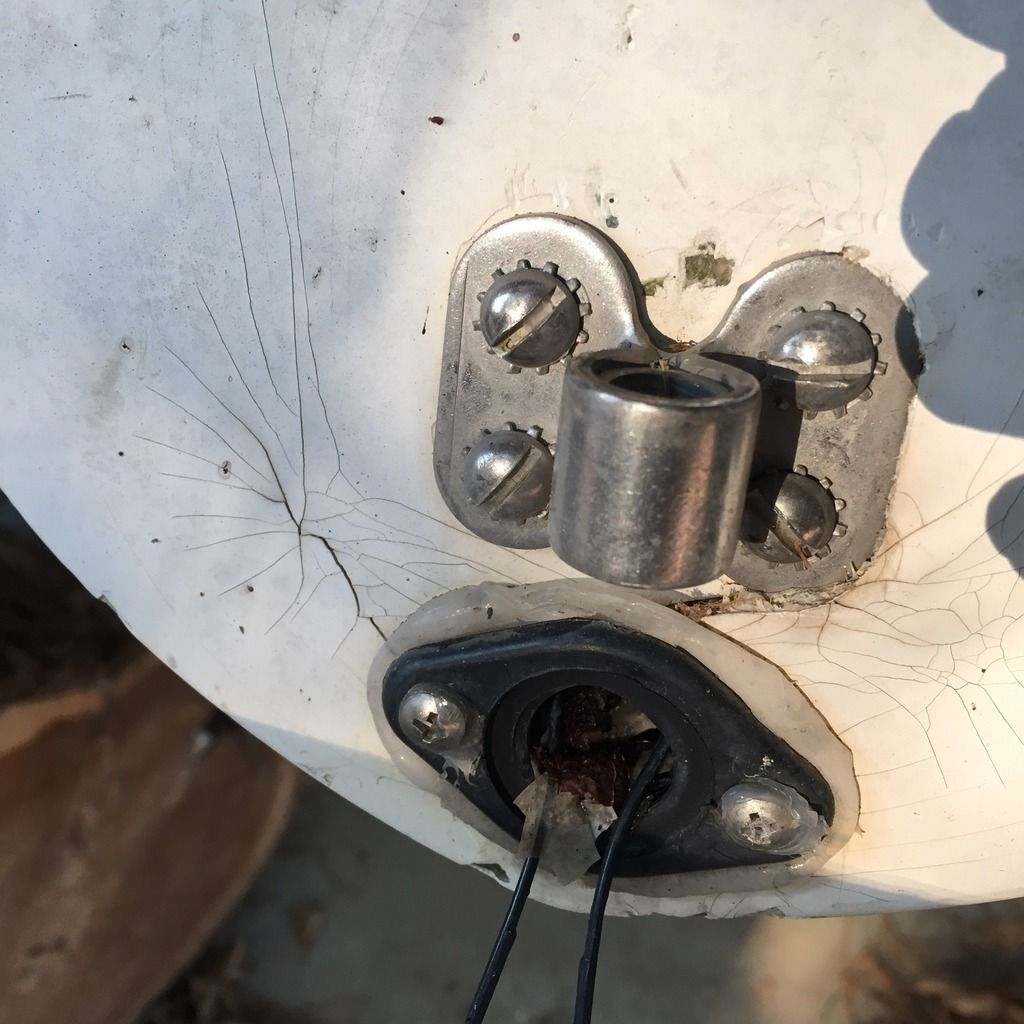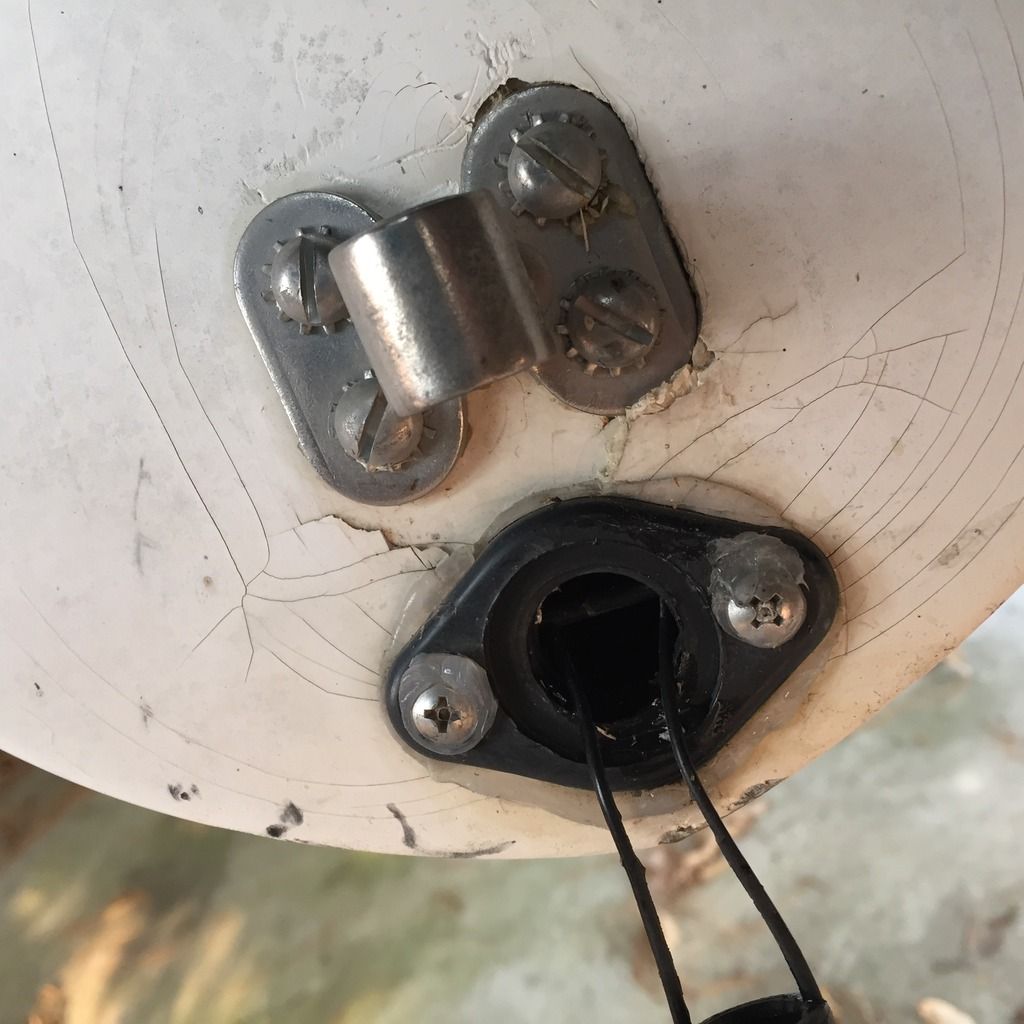First thing is to remove the gudgeons and drain port, then start sanding off the gel coat to see how far the damaged fiberglass reaches. Good fiberglass is usually somewhat translucent, damaged fiberglass is white and opaque. Once you've gotten the gelcoat off of the damaged area, you'll need to sand down all the damaged fiberglass until you reach good fiberglass. Make sure to leave a gradual taper from the surrounding area unaffected by the damage to the hole. Given that you do have a hole, you'll need to either glass over the damaged area from both sides, or put a blank in the opposite side. Either way, it would probably be easiest to repair if you cut a hole in the deck to add a hull port.
Once you're down to good fiberglass, put a blank on the inside to cover the hole (some kind of hard plastic backing). Then cut out pieces of fiberglass cloth and CSM (chopped strand matte) roughly the side of the damaged area, cutting each successive piece gradually smaller to fill the taper & hole, and leave a somewhat uniform thickness for the whole transom. Note that the fiberglass tends to "shrink" once wetted with resin, and shrink more still as it cures, so you'll want to build the area back slightly thicker. Fiberglass cloth should be applied in different orientations for each layer. You mix the resin and apply it to the transom and to each piece of fiberglass individually, then start layering them on. Once complete, you'll need to cover the area with saran wrap or wax paper to allow it to cure, as it doesn't cure when exposed to oxygen. Once it's fully hardened, you'll have to sand down the repair to make it flush with the hull. You can coat it with gel coat afterwards if you want, or you can just re-drill the holes and re-mount the gudgeons and drain.
Fiberglass work isn't difficult, just a little time consuming. There are a lot of sources online to learn how to do it. This being the transom, the fiberglass in that area is likely to be very thick and you may need to apply the fiberglass in several steps, as it may not fully cure if it's too thick. Say 3-4 layers of glass at a time might be a good approach. However, fortunately for you, there is not foam core in the transom to complicate the repair.
|

